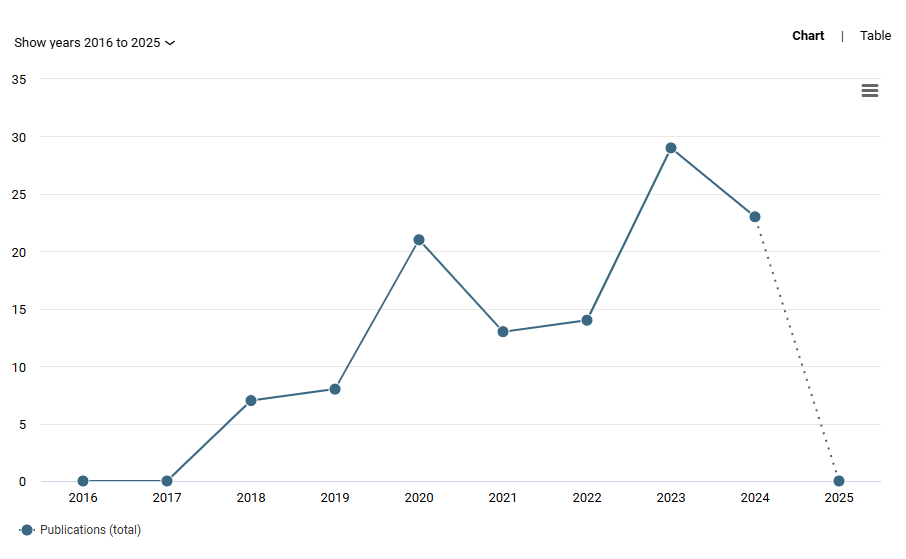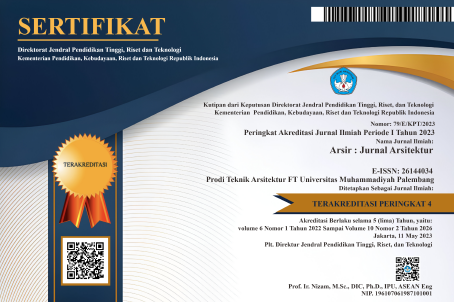Optimization of Natural Lighting for Visual Comfort: Simulation of Architecture Studio Space Using EPW Geolocation D.I. Yogyakarta
DOI:
https://doi.org/10.32502/arsir.v8i1.154Keywords:
Daylighting, Visual Comfort, Architecture Studio SpaceAbstract
Daylighting is a crucial element in workspace design, especially in architecture studios. Proper lighting not only improves productivity and comfort, but also has an impact on the health and visual well-being of space users. This research aims to evaluate the intensity of natural lighting entering the space to ensure that the lighting levels meet the visual comfort standards of the space users. This research method uses Sketchup, Rhino 7 and Grasshopper software simulations to see the distribution of incoming light in the architecture studio space by using the EPW coordinate geolocation of Yogyakarta and time to control natural light from east to west. The variables used in this evaluation are incoming light distribution, window size (WWR), wall material and color. The results of this study show that daylighting plays an important role in creating visual comfort in architectural studio workspaces, with the right lighting intensity of 350 - 750 lux based on Illuminating Engineering Society (IES) standards, thus having a positive impact on the visual well-being of studio space users. In addition, daylighting can provide a good strategy in improving the quality of architectural studio workspaces and directly contribute to improved performance and creativity. The benefits of this research evaluate daylighting on visual comfort in order to increase productivity at work, so that daylighting can be utilized as much as possible, and have a positive impact on the well-being of studio space users.
Downloads
Published
How to Cite
Issue
Section
License
Copyright (c) 2024 Ingrid Vicaningrum, Syam Rachma Marcillia

This work is licensed under a Creative Commons Attribution-ShareAlike 4.0 International License.
Arsir: Jurnal Arsitektur (AJA) have CC-BY-SA or an equivalent license as the optimal license for the publication, distribution, use, and reuse of scholarly work.
Authors who publish Arsir: Jurnal Arsitektur (AJA) agree to the following terms: Authors retain copyright and grant the Arsir: Jurnal Arsitektur (AJA) right of first publication with the work simultaneously licensed under a Creative Commons Attribution License (CC BY-SA 4.0) that allows others to share (copy and redistribute the material in any medium or format) and adapt (remix, transform, and build upon the material) the work for any purpose, even commercially, with an acknowledgement of the work's authorship and initial publication in Arsir: Jurnal Arsitektur (AJA). Authors are able to enter into separate, additional contractual arrangements for the non-exclusive distribution of the journal's published version of the work (e.g., post it to an institutional repository or publish it in a book), with an acknowledgement of its initial publication in Arsir: Jurnal Arsitektur (AJA). Authors are permitted and encouraged to post their work online (e.g., in institutional repositories or on their website) prior to and during the submission process, as it can lead to productive exchanges as well as earlier and greater citation of published work (see The Effect of Open Access).
![]()
Work is distributed below This work is licensed under a Creative Commons Attribution-ShareAlike 4.0 International License.










